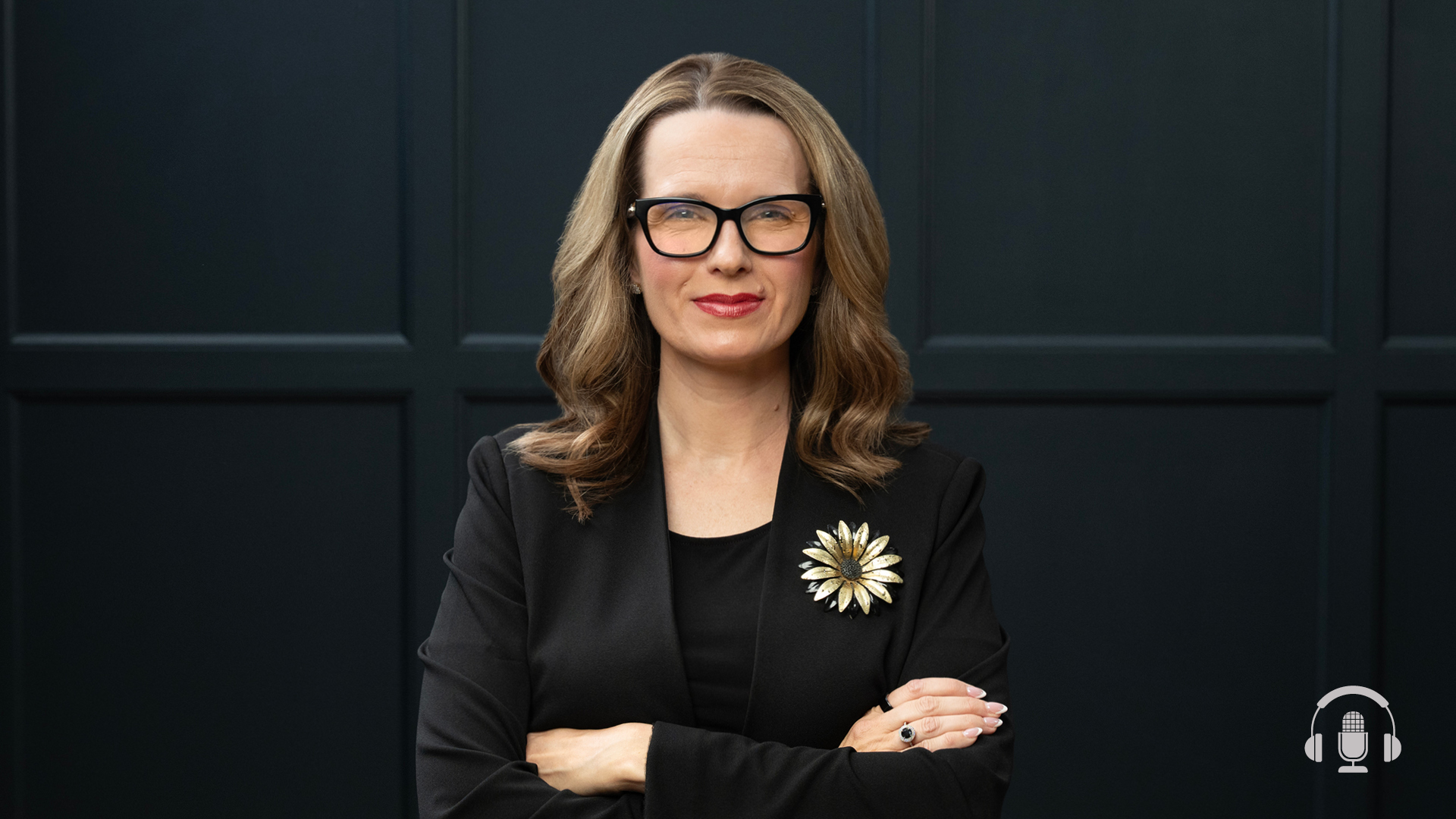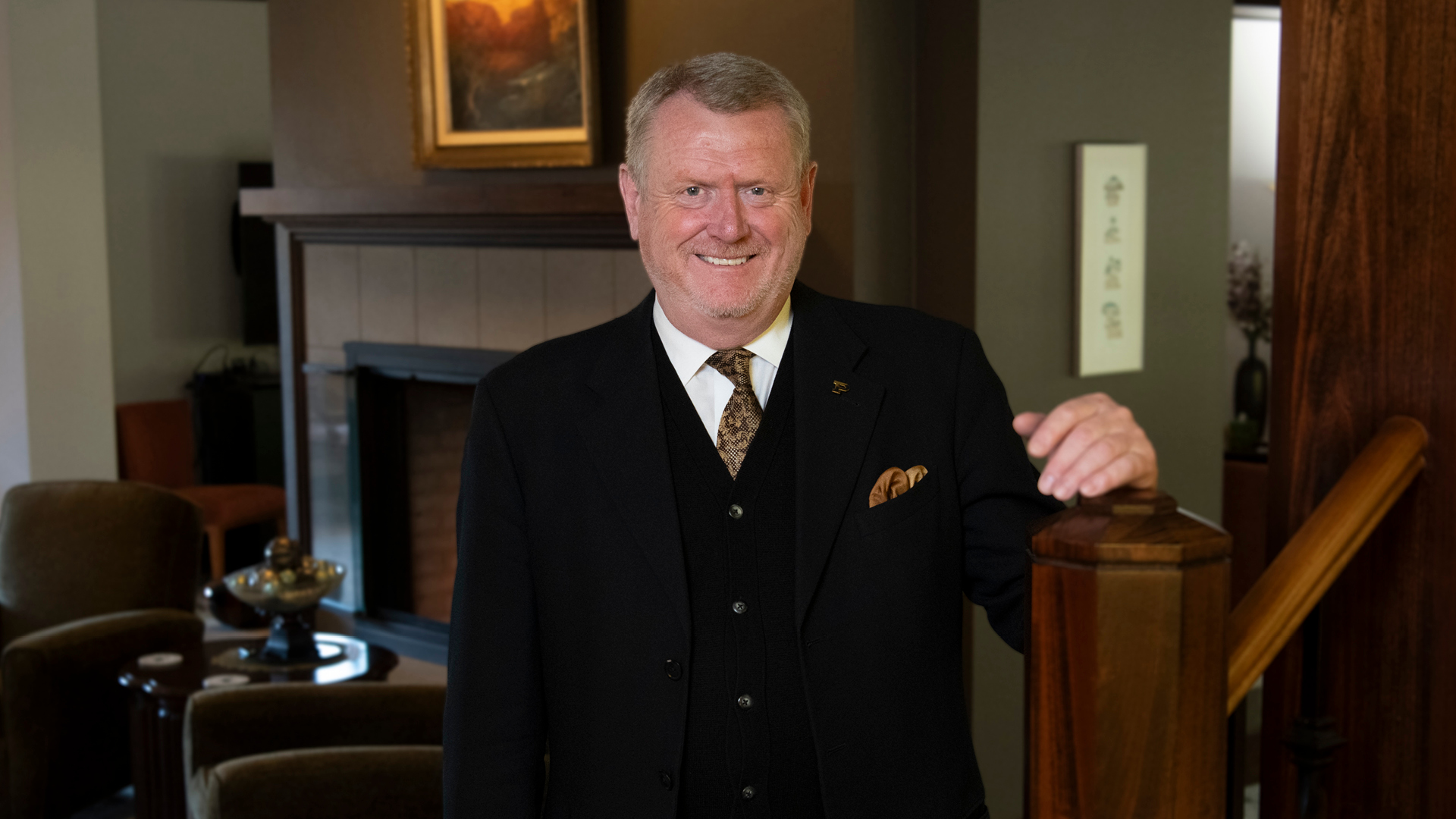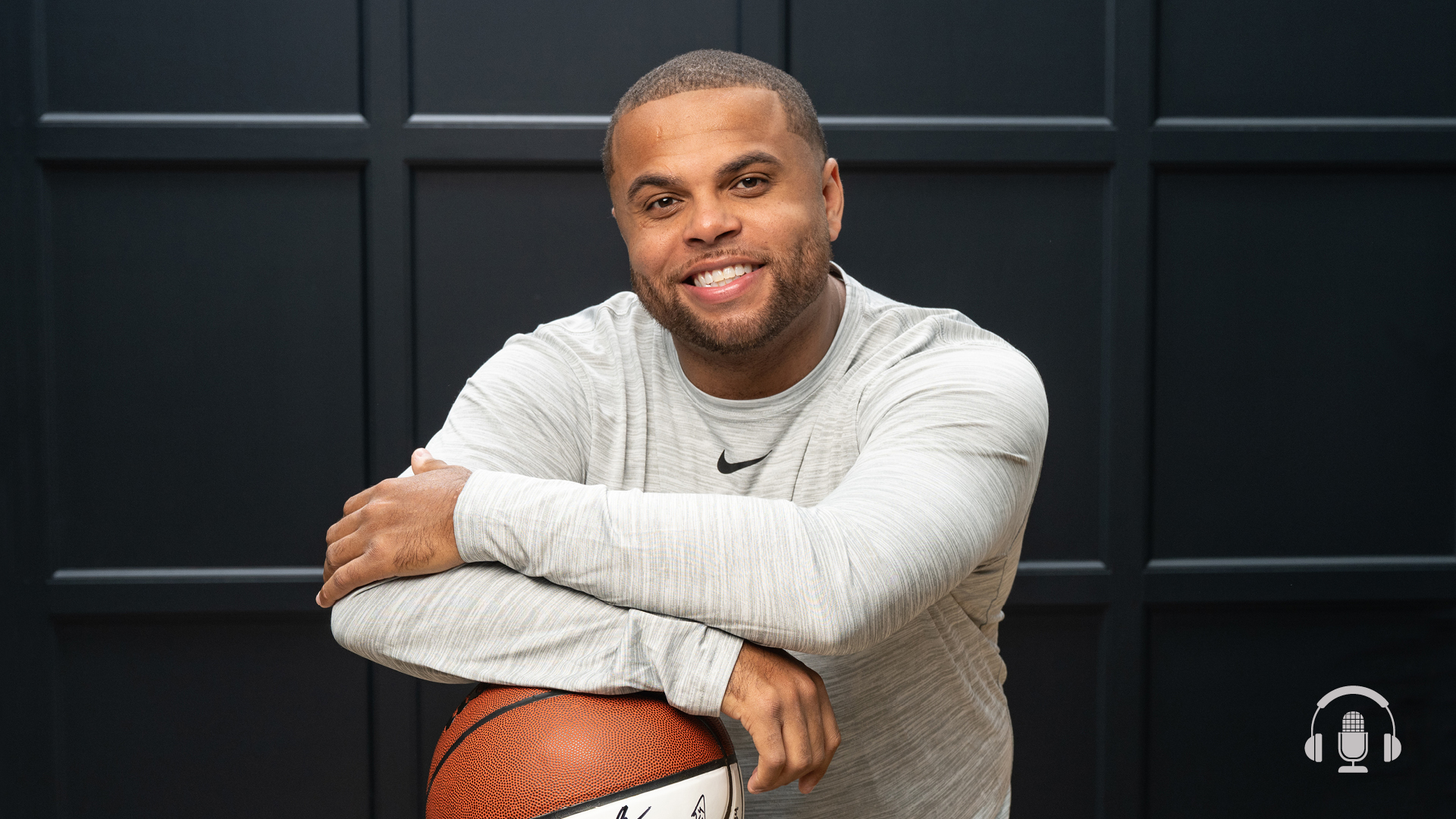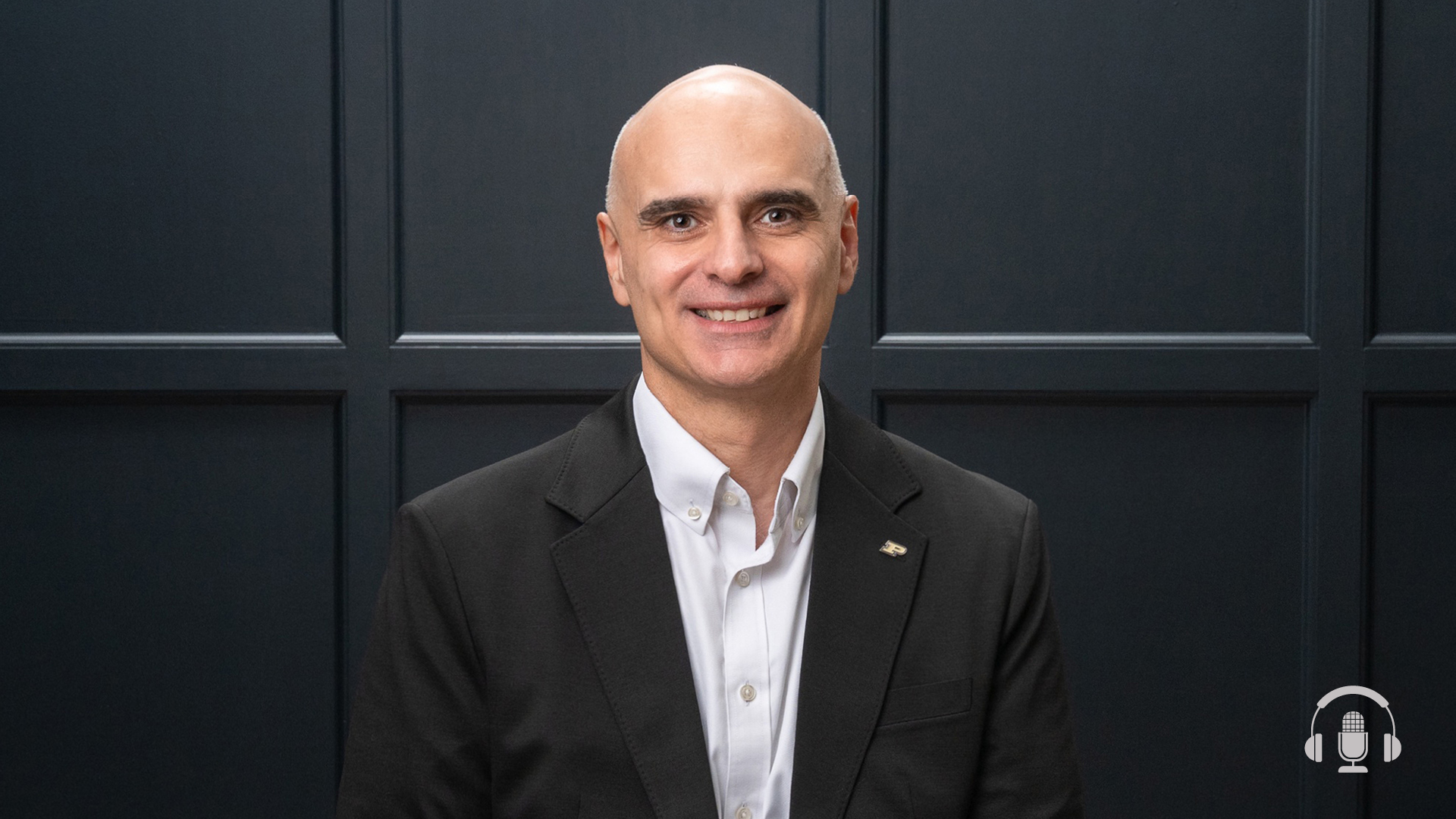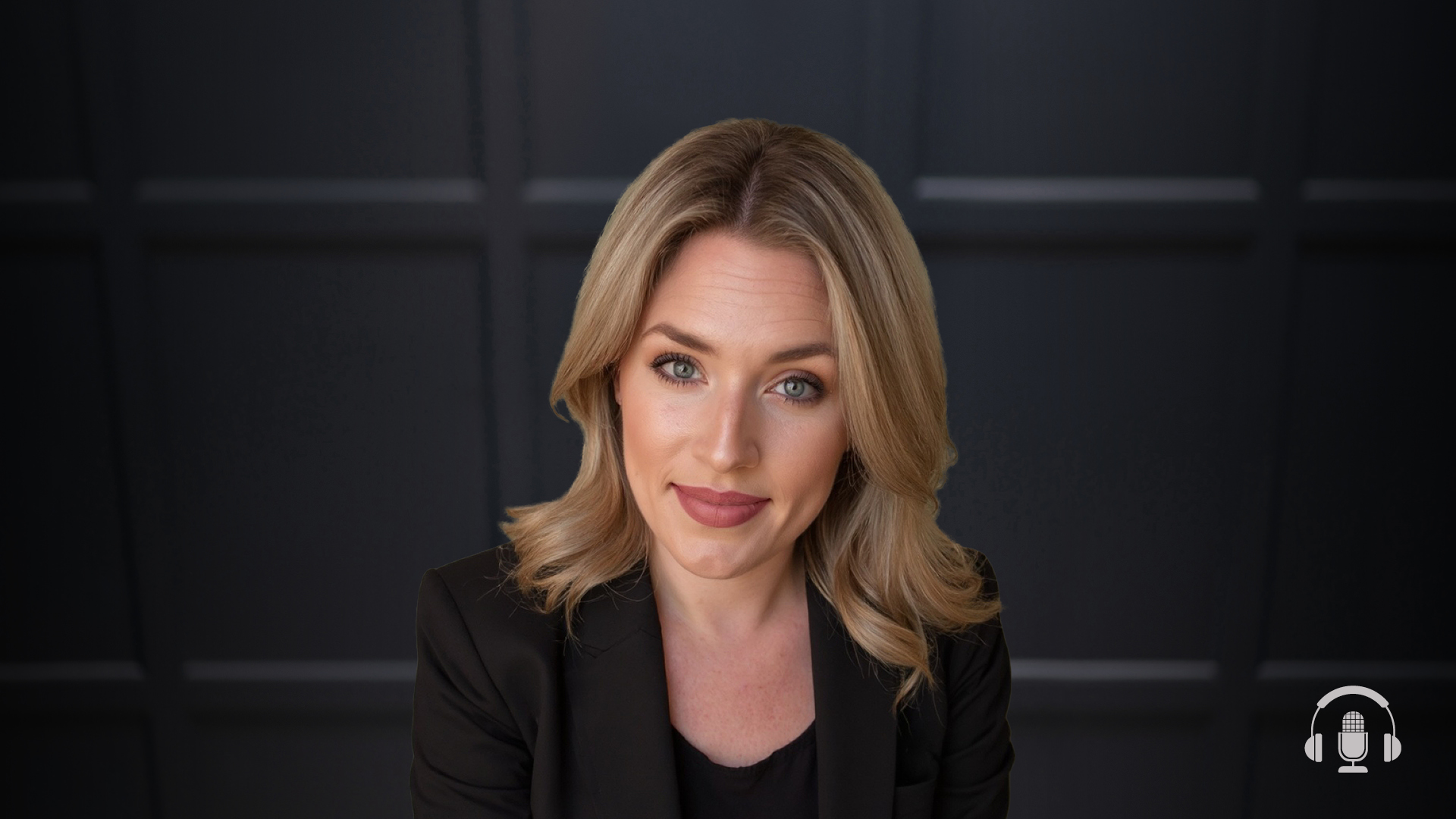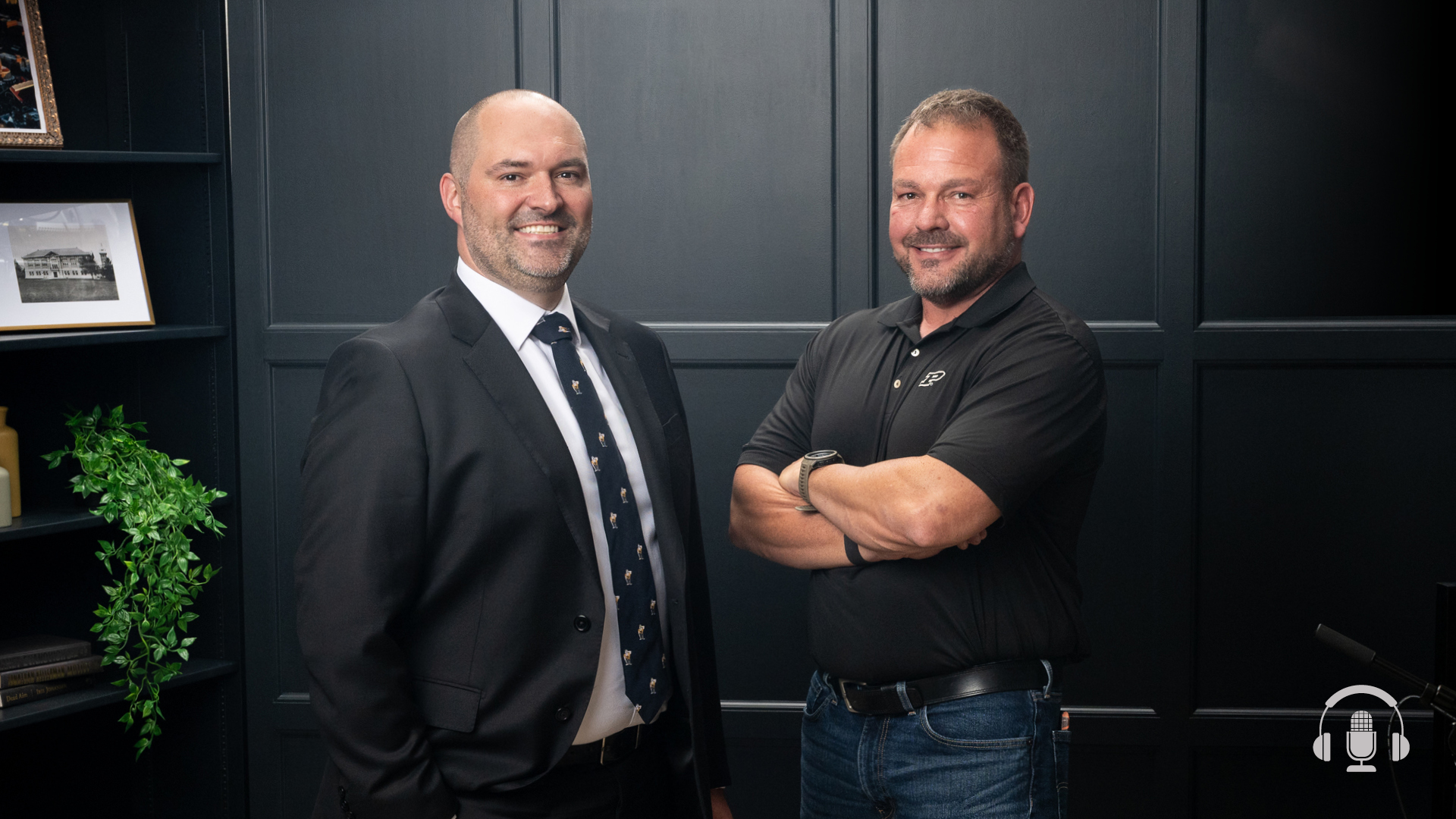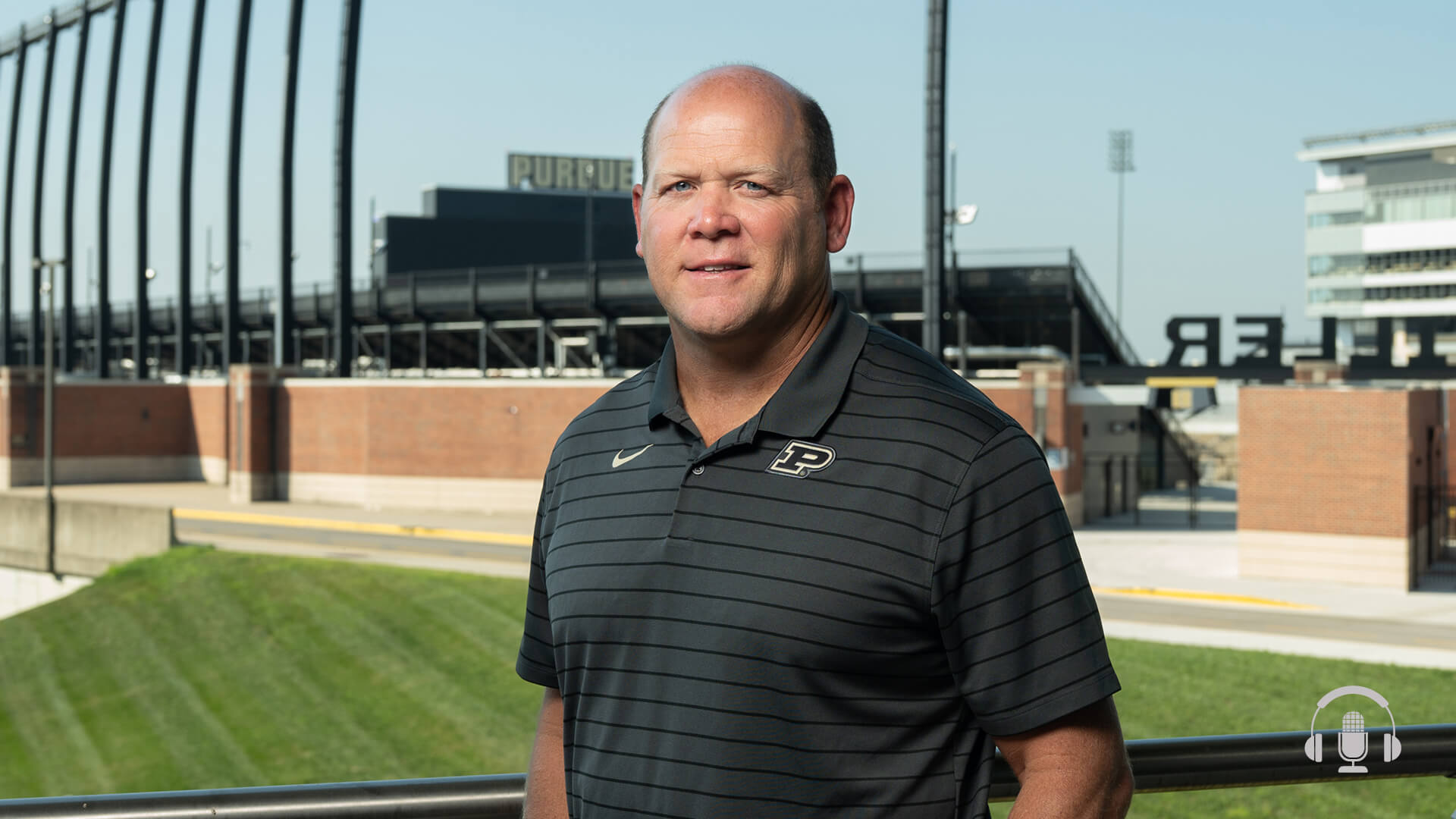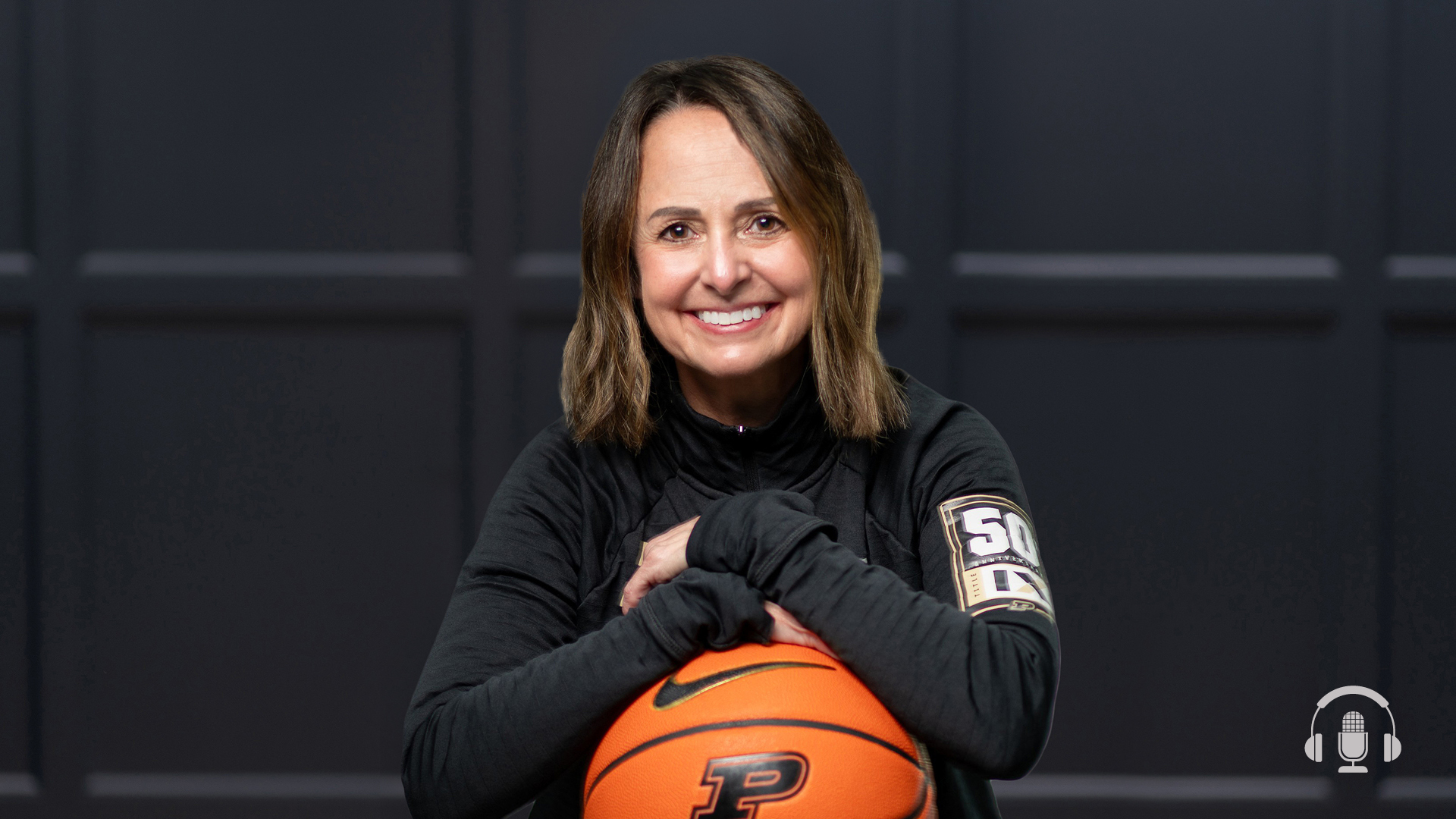Podcast Ep. 116: Celebrating 100 Years of History at the Purdue Memorial Union
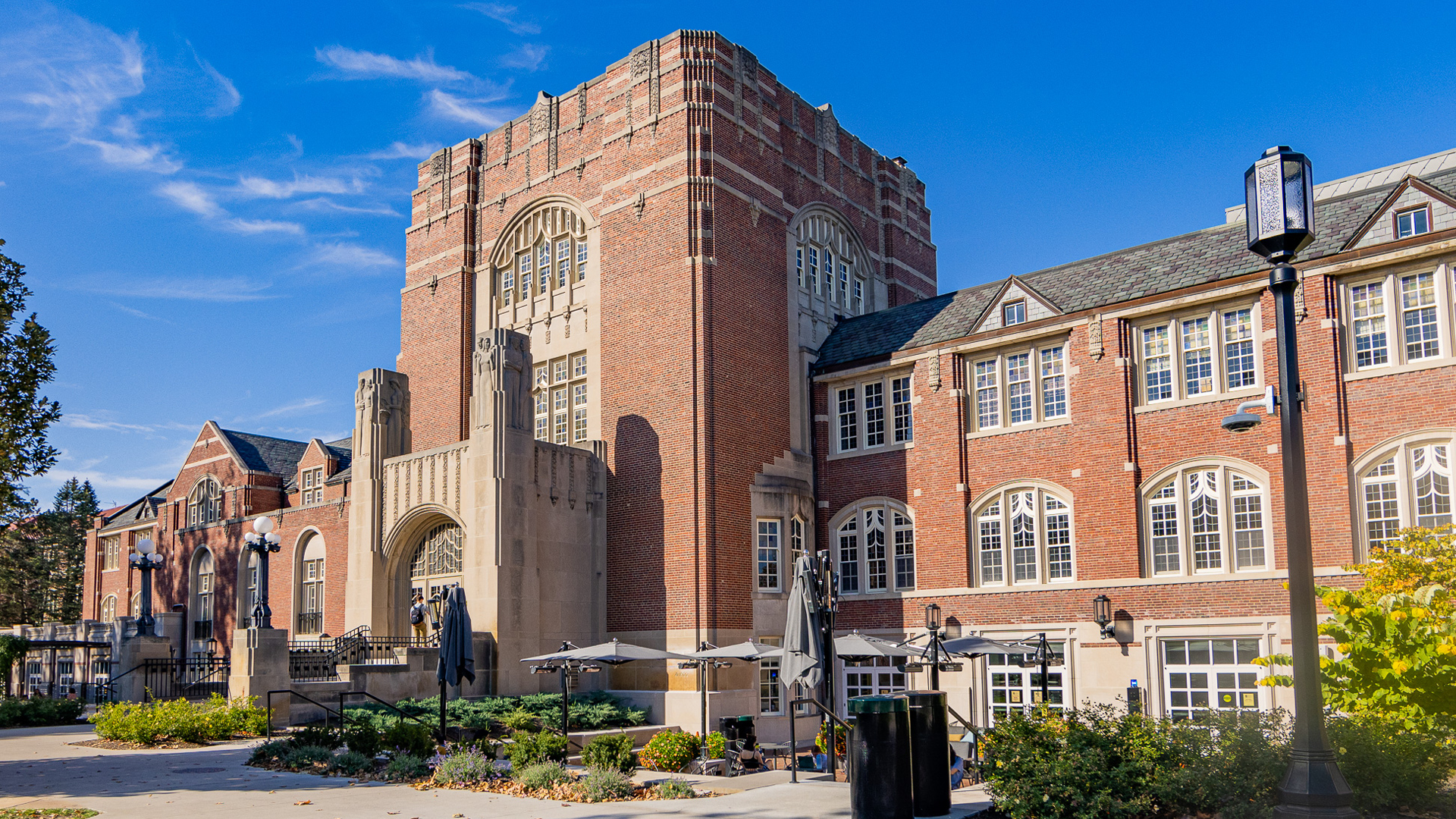
In this episode of “This Is Purdue,” we’re talking to Bob Mindrum, former director of the Purdue Memorial Union and author of “Purdue Memorial Union, The First 100 Years, 1924 to 2024.”
The Purdue Memorial Union — a longtime centerpiece of Purdue’s campus — is celebrating its 100th anniversary on Sept. 9, 2024.
In this episode you will:
- Learn about the history of the iconic Purdue Memorial Union from its fundraising efforts in the early 1900s to the newest renovations, like the Purdue Union Club Hotel.
- Explore the symbolic architecture by Pond & Pond architects, who also designed the unions at the University of Michigan, Michigan State University and the University of Kansas.
- Discover why PMU became a memorial for the Boilermaker military community and the ways this military significance is represented throughout the Union.
- Get to know how the Union has served students over the decades from socializing at events like Singleton Shuffles and junior proms to gathering for concerts by popular musicians like Frank Sinatra and Sonny & Cher to studying in the East and West Main lounges.
- Find out how the PMU will continue to serve future generations of Boilermakers.
If you’re interested in history, you’re in for a treat with this episode, Boilermakers! Join us in celebrating 100 years of this beloved campus icon.
- Learn more about the Purdue Memorial Union
- Learn more about the 100th anniversary celebrations
- Purchase “Purdue Memorial Union the First 100 Years, 1924–2024” by Bob Mindrum
Podcast Transcript
Bob Mindrum:
This is Bob Mindrum, and you are listening to This is Purdue.
Kate Young:
Hi, I’m Kate Young, and you are listening to This is Purdue, the official podcast for Purdue University. As a Purdue alum and Indiana native, I know firsthand about the family of students and professors who are in it together, persistently pursuing and relentlessly rethinking. Who are the next game changers, difference makers, ceiling breakers, innovators? Who are these Boilermakers? Join me as we feature students, faculty, and alumni taking small steps toward their giant leaps and inspiring others to do the same.
Bob Mindrum:
On that day, September 9th, 1924, the Purdue Memorial Union opened. It’s just amazing to me that at that time, all of a sudden this magnificent building emerges out of fairly barren farmland, and I can only imagine the impact that that had on Purdue students and the Purdue community.
Kate Young:
In this episode of This is Purdue, we’re talking to Bob Mindrum, former director of the Purdue Memorial Union and author of Purdue Memorial Union: The First 100 Years, 1924-2024. The Purdue Memorial Union, a longtime centerpiece of Purdue’s campus, is celebrating its 100th anniversary in September 2024. The mission of PMU is to provide spaces, opportunities, and services that foster an inclusive environment, enrich the student and community experience, and support the educational mission of Purdue University.
And if you are interested in history, you’re in for a treat with this episode, Boilermakers. Bob walks us through the early stages of the Purdue Memorial Union and how it was brought to life, from the beginning fundraising efforts to the symbolic architecture by Pond and Pond architects, who also designed the Unions at University of Michigan, Michigan State University, and University of Kansas. You’ll also hear about the rich history and tradition of PMU as we celebrate this 100 year milestone and discuss what this building means to hundreds of thousands of Boilermakers across the world. Plus, how will this iconic landmark continue to evolve and meet the needs of future generations of Boilermakers? It’s all part of this episode right here on This is Purdue.
Now, we conducted this interview inside the Purdue Memorial Union in the beautiful South Ballroom. You can check out the full video interview with Bob plus a few different clips highlighting the history of PMU, including a 100-year-old copper time capsule box. Yes, you’re definitely going to want to see that one. It’s all on our podcast YouTube page. Head over to youtube.com/@ThisIsPurdue for more. Okay, let’s get to it. Here’s my conversation with Bob.
Bob, thank you so much for joining us on This is Purdue. We’re here to talk about the Purdue Memorial Union and iconic building to so many Boilermakers and just for this community overall. You were the PMU director for over two decades. Let’s kick things off. Let’s talk about the history of PMU, what it means to our Boilermakers in this community. So this opened in 1924. We’re about to celebrate 100 years. What’s the early history of PMU? How did it come about? Tell us a little bit about that.
Bob Mindrum:
I think most of us in the union profession would agree that the college union movement, if you will, began in England in the early 19th century at Oxford and Cambridge universities. There was an Oxford union and a Cambridge union, but they were largely debate societies. And I find that interesting personally because when you think about debate, you think about the willingness to disagree, hopefully civilly, on a given topic. You think of divergent thought and opinion and free expression, and fast-forward 200 some years, those very things often associated with college unions today in this nation and across the country.
But these debating societies were very competitive, but eventually they extended each other. The courtesies of when a visiting debater would come from one or the other of Oxford or Cambridge, they often would like a light lunch on the day of the debate. They would like to have a quiet reading room where they could prepare for the debate. They might have a dinner if that option was available, and they might even stay overnight if overnight accommodations were available. When you think of those things, and you think about unions today, the provision of cafeteria and meal service, quiet reading rooms and lounges, and in some cases overnight lodging, it’s easy to see why those are considered the harbingers of the college union movement.
This caught the attention and moved to North America and the United States. Some of the early adapters would be Harvard Union at Harvard University, Hart House at University of Toronto, and closer to home, the Michigan Union at the University of Michigan. But in around early 1900s, class of 1912, George O. Hayes, he was a student, and he was the editor-in-chief then of the Exponent. And yes, the Exponent was here then. But he proposed through a series of editorials that Purdue should have a union. As you might imagine, this captured the attention and imagination of students in particular, but actually very few others. Nevertheless, a constitution was drafted, and fundraising began. Back in those days, fundraising was separate from the university. But unfortunately in the two years before the onset of World War I, only $17,900 was raised, and you’re talking about a facility that then was estimated to cost perhaps upwards of $1 million.
However, by 1921, I’ll talk a little bit about this later, almost $1 million was raised, and so that got Purdue’s attention. They sought and were able to contract with Pond and Pond architects from Chicago, who I’ll also talk about more, and the design for the Union was made. In 1922, ground was broken, and on September 9th, 1924, the Purdue Memorial Union opened. It was with temporary pine floors, unplastered ceilings and walls, a second floor that wasn’t even usable, but it did have a cafeteria, a soda fountain, which was the predecessor to the legendary Sweet Shop. It had lounges for informal interaction, and it had this very room in which we sit. It was called the Assembly Room and later the South Ballroom, and that’s where their big dances occurred. It’s just amazing to me that at that time, all of a sudden this magnificent building emerges out of fairly barren farmland, and I can only imagine the impact that that had on Purdue students and the Purdue community.
Kate Young:
The Purdue Memorial Union has indeed impacted so many different Boilermakers over the past 100 years, and this iconic landmark on campus continues to do so. For current students, maybe it’s where you grab a snack or coffee and study in between classes. For alums, you may remember touring PMU before you officially became a Boilermaker, or maybe you stay at the Union Club Hotel when you come back to campus to catch a football game. Bob goes on to explain the history and significance behind the word memorial in the name Purdue Memorial Union.
Bob Mindrum:
If you think that only $17,900 was raised in two years, after the war between 1918 and 1921, that increased to almost $1 million. And why is that? Well, I would say that it’s because of the 4,013 Purdue men and women that served in that war and the 67 who died, and so quickly it became apparent that they should add the word memorial to Purdue Union. And so that’s how the Purdue Memorial Union came into being. And from that point on, with great organization and lots of effort, the money began to pour in. And if I may, at the groundbreaking, Governor Warren T. McCray gave this speech. There were lots of speeches back then. If I may, I just want to read a little bit to give you the tenor of that feeling of appreciation for those who died in the war.
He says, “The building of an enduring and imposing edifice is a memorial to the valor and gallantry of its alumni student body who unselfishly and heroically gave up all they held dear to enlist for the defense of their country is indeed a most deserving and patriotic act. The record of hopes banished, of ambitions forgotten and opportunities dismissed by the gallant young manhood of the nation, constitutes the brightest page in the memorials of the Great War. While we deeply mourn the loss of the men who made the supreme sacrifice, it is not for us to grieve as those without hope. The men who sleep in the halls of death do not ask for grief. They died that the world might be made better and brighter and that their country might be free from the stain of dishonor. May this structure forever stand as a temple dedicated to the doctrines of peace and goodwill toward men, standing solidly upon the principles of eternal justice and mercy, honesty, and righteousness.”
Kate Young:
That’s incredible.
Bob Mindrum:
That is the kind of feeling that was pervasive at the time in which led to the outpouring of funds that created the Purdue Memorial Union.
Kate Young:
Let’s get into some of that symbolism that honors our military right here in PMU.
Bob Mindrum:
First, the Great Hall itself is a monument to those who gave their lives in First World War. They called it the Great War back then and then the World War. They weren’t really sure that they would have numbers unfortunately, but later it was known as World War I. So the Great Hall itself is a monument to those. In the center of the Great Hall on the floor is a golden black cross, and that symbolizes the lives lost by the 67 who died in that war. There are plaques on three of the walls in the Great Hall that list those who died in military service in those wars, World War I, World War II, the Korean War, the Vietnam War, and then there is also a global memorial plaque, and that is really because they stopped calling them wars. They were military conflicts. And so those recorded lives lost, say for instance in Iran or in Afghanistan.
There is a Battery B flag encased in glass in the Great Hall, and that honors a group of Purdue students who were in Battery B. That was the precursor to ROTC. They were affiliated with the Indiana National Guard. And when Pancho Villa invaded New Mexico and the Mexican-American war began, they were called to service. And so that honors Battery B. There is also more recently a POW-MIA chair in the Great Hall, and that honors those who were either prisoners of war or missing in action in military service to the country.
We have the Dorothy B. Stratton Veteran and Military Success Center up on our second floor northwest. And I guess lastly, I would point to the Veterans Day celebration occurs in the Great Hall every November. This is sponsored by the Purdue Student Union Board, or PSUB, and if you’ve never been to one of these events, you’re really missing out. It begins with presentation of colors by the Purdue ROTC, the Pledge of Allegiance, of course, speeches by veterans and other officials, patriotic songs by the Purduettes and the Glee Club. And if you’ve never heard them sing in the wonderful acoustics of the Great Hall, again, you’re missing out. And it ends with a 21 gun salute outside the south entrance to the Union.
Kate Young:
So we’re celebrating 100 years. We talked about the rich history from 1924. Now it’s 2024. How has PMU evolved over time?
Bob Mindrum:
I like to think that the purpose of the Union is the same over those 100 years, and that is to provide a place where students can gather and interact, and most of all, a place where community building can take place. But certainly as the campus grew, the demands upon the Union also grew. And so there were many additions and renovations and improvements that were made. I’d point to just a few. There were two additions to the Union Club Hotel during this time, one in 1939 and one in 1955. There was a west addition to the Union added, and thus was added the what’s now called the West Main Lounge, the West Great Hall, and the North Ballroom.
There was an east addition that created a new entrance to the Union from the east, and that created a pathway to the Union Club Hotel. It created the Browsing Room Library, which was later an art gallery and then a welcome center, and now the dining room of 8Eleven Bistro at the same spot. But it also created a new billiard room and five new bowling lanes, which were of great interest to students at that time. But in all of these additions and renovations, I can tell you that great attention was paid to preserving the architectural integrity and the interior design of the Union.
Kate Young:
PMU is a landmark of historical and cultural significance, and it’s in the heart of our bustling campus. I asked Bob why he thinks the Purdue Memorial Union stands out from other buildings on Purdue’s campus. Plus we discussed how PMU has shaped student life over the past century.
Bob Mindrum:
I would say that this is really the story of Pond and Pond, the architects. I think that Irving K. Pond and Allen B. Pond, who were brothers, they grew up Ann Arbor, Michigan and as a small piece of trivia, the Michigan Union sits on the side of the Ponds’ boyhood home. So they attended the University of Michigan to study architecture, and they eventually moved to Chicago to begin their practice. And in Chicago, they met and befriended Jane Addams, who was a famous Chicago social reformer, and she hired them to design the Hull House. The Hull House is an organization dedicated to service to immigrants to America. They housed them, they fed them, they educated them and their children. They helped them with English as a second language. And in general, they acclimated them to America and helped give them the skills to succeed. So with that sort of tenor, it’s easy to see why the Hull House was one of the earliest examples of community building and the college union ideal.
The Ponds flourished in Chicago. They were asked to design many, many buildings that had community building as their premise. Eventually they caught the attention of University of Michigan, and they hired them to build the Michigan Union. And then it wasn’t long before this captured the attention of Purdue. At Purdue, the Pond and Pond architects chose the Gothic revival style of architecture, which we have today, with its classic towers and gables and intricate ornaments. All of a sudden a local landmark emerged.
I think one of the things that distinguishes the Ponds from other architects is the great symbolism that they utilized in their architecture. Examples would be the Great Hall itself is designed to symbolize the sincerity, ruggedness, and individualism of Purdue students. The upswept beautiful wooden frames of the windows here are meant to symbolize the youth and spirit of the Purdue Union, and the multicolored stained-glass in those windows is meant to reflect the mixing of all colors, races, and creeds at Purdue. And if you think about that and think that that was 1921 or so, you can see that the Pond brothers, who were really part of that whole progressive era in Chicago, their beliefs and their philosophies predated racial integration and religious tolerance in America. So their symbolism was a big part of what the Purdue Memorial Union was and is.
Kate Young:
And how do you think that PMU has shaped our student life over the years?
Bob Mindrum:
I think the very design of the Union reflects the fact that students can and will use the facilities to determine what they believe is best for them. The lounges for informal interaction, the offices and meeting rooms for student clubs and organizations, certainly dining options to help quell the ever-present student appetite, bowling and billiards to while away whatever free time they had, and of course the ballrooms or the assembly hall where they held some of their big activities. I’m one who believes that there really was no agenda for shaping student life on behalf of Purdue or the Purdue Memorial Union, but I believe that the university recognized that if you provide a facility and if you provide resources to students, student life will take care of itself.
It really has through the years. In the beginning, there were events like weekly mixers, especially for couples. For those who weren’t fortunate enough to have a date, there were the singleton shuffles. There were the big dances, ballroom dances with orchestras, and some of them big name orchestras. So that was in the ’20s, ’30s, and ’40s. The advent of rock and roll in the ’50s. The music changed, but student interest remained high. And in the ’70s, the whole coffee house thing with acoustic folk music took hold. And so regardless of what era you’re talking about, students were quick to take advantage of the Purdue Memorial Union and to really shape their own lives.
Kate Young:
And now I’m wondering how many Boilermaker couples met through those singleton shuffles throughout the years. Bob dives into some of the best services the Purdue Memorial Union offers students, faculty, and visitors, and he highlights some of the most popular and significant events held at PMU.
Bob Mindrum:
Well, starting with visitors and alumni, I would point to the beautiful and recently renovated Union Club Hotel, complete with valet service and a parking garage right across the street. I would point to a very high quality and upscale catering and beverage operations, and I would point to just wonderful, together with Stewart Center, conference facilities that they can avail themselves from. For faculty and staff who are here on campus every day, probably it’s more the meeting rooms to conduct university business. Certainly the dining options they take advantage of, and certainly just the ability to interact with students informally is provided by the Union. For students, well, there’s Starbucks.
Kate Young:
That is key.
Bob Mindrum:
For students, all of this in the Union. Starbucks is just one example. There are many fine dining options that have been provided as part of the recent Atlas Family Marketplace renovation. There’s of course bowling and billiards. It’s now extreme bowling, and the billiard facility has been added to with Boiler Game Mine video gaming. I just think there’s a lot for them both personally, and if they’re interested in getting involved in student activities to help them with student leadership development, that kind of thing. That’s here too.
Kate Young:
I know I’ve been to a number of conferences in here. It’s like the epitome of being on a college campus and that nostalgia sitting in here studying when I was a student and then coming back in here. I know one of the most popular events is the Christmas tree lighting here. Tell us a little bit about that event and the significance of it, and how long does that span back? Did that start back in 1924?
Bob Mindrum:
Well, actually, no. Actually, the Christmas tree lighting event is really rather recent in the history of the Union. It probably started in the early 2000s. And I can remember, I think the first president who lit the Christmas tree, if you will, was Mitch Daniels. So you have all of these people gathered around the Christmas tree that is yet to be lit, and after some remarks, the president would hit a big red button, and magically the lights would light up. The anecdote behind that, which some people don’t know, is that as technologically savvy as Purdue is, we really had no way to have him push a button and have the tree light up. So one of our faithful staff members, usually Terry Clayton, would be up on the second floor in a utility closet where the electrical service was. And that’s why there’s a countdown. You’d see the president go, “10, 9…” And as it gets down to a zero, Terry would flick the switch, and no one was the wiser.
The whole business of the tree, that probably started in the 1930s. More recently, those trees have been donated to Purdue. Before, they used to have them come in on freight cars from Wisconsin and other places. But usually on the first week of December, the Bull Gang from Purdue and other associated volunteers with long ropes would yank that 25 to 30-foot tree through the small doors on the south entrance into the building and put it in its place of prominence. That has been a wonderful tradition through the years, and it’s a community tradition. I think more than anything else that it’s usually around noon on or about December 5th, something like that, you’ll see people from the community with their children all around just waiting to see that Christmas tree come in. I think originally it was probably intended to help Purdue students, some of whom had never been away from home and give them solace during the holidays.
Kate Young:
Do you have any other favorite traditions or annual events that happen at PMU?
Bob Mindrum:
Gosh. You can imagine with somewhere now between maybe 10,000 and 15,000 events in a year, there are many significant events that take place here. Certainly those early dances in the ’20s, ’30s, and ’40s were big, especially the Junior Promenade they called it. It was shortened to Junior Prom, and the military ball. These were big events, but there were also many other events during that time. Much later, there was a guest speaker, Cleve Jones, who was an AIDS activist, and he appeared and gave a very enthusiastic speech that was well attended in conjunction with the display of the Purdue AIDS Quilt, which was co-sponsored by PSUB and the LGBTQ organization. So there are many events like that. One of the biggest ones, of course, is when the Purdue astronauts had their reunion here. That was a big weekend for the Union and included, of course, our alumnus Neil Armstrong.
For me personally, it was always Saturday mornings of home football game weekends. This is when the President’s Council of Purdue would post their meals and festivities here in the ballrooms as part of game day activities. The hotel was sold out. The lounges were filled with alumni sporting their latest Purdue gear. The restaurants were all busy. There was a wonderful brunch. There were remarks by the president afterwards. There was entertainment by the Purduettes or the Glee Club or another PMO organization. And while that was wonderful, it also took a great toll on our staff because Saturdays aren’t always considered a working day, but these certainly were, and I remember us talking with them one time in a pep talk. I said, “With all of this history and tradition and pomp and circumstance and attendance and excitement, if you can’t get excited about working today, you’re probably in the wrong business.”
Kate Young:
Yeah, absolutely. How do you think that all of these events that you just highlighted have built the PMU into such an iconic place for the West Lafayette community overall, maybe even if they didn’t attend Purdue?
Bob Mindrum:
I think it’s the architecture, certainly. I think it’s the reception that the Purdue Memorial Union has had over the years. I think it’s the excitement of students when they’re here and how much they say. They’re not always aware of it when they’re here. Particularly, I’m thinking of the students on the Purdue Student Union Board. They’re here to have fun and meet guys and gals and do the things that most college students do, but over time, they always point back after they’re graduated and have their own jobs at how much they learned as being part of the Purdue Student Union Board and going to Purdue University. So I think the alumni certainly play a big part in this. They come back. They’re very faithful. They contribute their time and their effort and their dollars to maintaining places like the Purdue Memorial Union. So that and the amazing architecture of Pond and Pond, I think that’s what lends itself to the Purdue Memorial Union being the icon that it is.
Kate Young:
Absolutely. You talked about Neil Armstrong earlier. What other notable guests, VIP guests, alumni? Who else can you tell us stories about who have visited PMU?
Bob Mindrum:
I mentioned the whole business of ballroom dancing in the ’20s, ’30s, and ’40s with big name orchestras. I mean, those weekly mixers and some of those weekly dances had also orchestras. In researching the book, there were, I mean, literally hundreds of orchestras that played here, local, more local orchestras, but there were some big names. There was Tommy Dorsey and his orchestra with their new lead singer, Frank Sinatra, who played in the North Ballroom. There was Duke Ellington and his solo trumpeter, Louis Armstrong. There was Count Basie and his orchestra. So those were just some of the big names. But then as music evolved, and a lot of the culture here in the Union with students has to do with music. There were groups like the Dave Brubeck Quartet, Simon and Garfunkel, Harry Chapin, The Temptations, Sonny and Cher, you name it. A lot of those entertainment celebrities were here from one time or another. And other individuals that were here in the Union, Bob Hope, Jack Benny, all of the Purdue astronauts, of course, Loretta Young, Red Skelton, Nipsey Russell, even the San Diego Chicken mascot stayed here.
Kate Young:
Wow.
Bob Mindrum:
That’s just a few.
Kate Young:
Those are some big name musicians who were here back in the day.
Bob Mindrum:
Yeah.
Kate Young:
Wow.
Bob Mindrum:
Absolutely.
Kate Young:
What’s a favorite memory for you during your time leading PMU, if you had to reflect back? One thing that really sticks out?
Bob Mindrum:
I would say the one thing that meant the most to me was building a team here who understood the importance of sound financial management. Watching that team flourish as their operations became more successful financially and otherwise, and then witnessing all of the amazing capital improvements and other projects that took place because of that improved performance. My favorite anecdotal memory was because most union directors would tell you that their life and career is just one prolonged juggling act. We need you to maintain tradition here. We need you to honor the architecture. We need you to improve operations. We need you to make more money. We need you to add new services.
And with all of those, you wonder sometimes if the juggling will ever end. But one day I was walking down the main corridor here, and I was behind an alumnus father who had his son with him, who was obviously looking at Purdue as a potential place to have his education. And the father said, “Wow.” He said, “This place is just like I remembered it.” And the son said, “Well, that may be.” He said, “But with seamless wifi and a Starbucks and all these things to do, it certainly makes sense to me.” So music to my ears.
Kate Young:
You maintain the history, and you got the Starbucks.
Bob Mindrum:
Indeed.
Kate Young:
Reflecting on this 100th birthday, what an incredible milestone. What does that mean to you as a former PMU director, and how does it feel to celebrate this?
Bob Mindrum:
I think of, first of all, perhaps what it means to the community, both the Purdue community and the community at large. And I think of terms like gratitude, gratitude to Purdue for recognizing that Union’s an important place and for keeping the Union and its spirit alive. I think of continuity in that the Union represents a demonstration that some Purdue traditions continue on even after 100 years. And I think of pride, pride that the Purdue University saw fit to maintain the Union as it is, and that they understand the contributions that unions make to the students of the future.
Kate Young:
And how does Bob imagine the iconic PMU will evolve to meet the needs of future generations of Boilermakers in the next 100 years?
Bob Mindrum:
Personally, I think that you will see much more of the same, and by that I mean I think that you will see many amazing and unpredictable things happen here at the Union, but all of them with the same sort of purpose, and that is to engage students to build community. I have no doubt that even though I can’t see 100 years into the future, I have no doubt that the Union will continue in its legacy. As I researched the book that I wrote recently about the Purdue Memorial Union: The First 100 Years, I recognized just how much effort it took to create this union and to maintain it over the years. So when I think of all the Herculean efforts that other people have made, I just feel proud and humbled that I’ve been able to play one small part in it for 21 years is my time here.
Kate Young:
Absolutely. Well, we can’t thank you enough. This was so fun to reflect on 100 years and celebrate 100 years.
Bob Mindrum:
Thank you.
Kate Young:
Bob was such a fantastic Boilermaker to celebrate the 100th birthday of our beloved Purdue Memorial Union with. If you want to watch Bob walk through some historical PMU stories in his book, including how Purdue students watched football games before the invention of the television, be sure to check out our This is Purdue YouTube page. We also have a video featuring a 100-year-old copper time capsule box that was recently dug up from within the cornerstone of PMU with Zane Reif, senior director of the Purdue Memorial Union & Auxiliary Services. Just head over to youtube.com/@ThisIsPurdue. We also linked Bob’s book, Purdue Memorial Union: The First 100 Years, 1924-2024 in our podcast show notes for you if you’re interested in purchasing this special book through Purdue University Press. And as always, be sure to follow This is Purdue on Apple Podcasts, Spotify, iHeart Radio, or wherever you get your podcasts.
This is Purdue is hosted and written by me, Kate Young. Our podcast videography for this episode was led by Ted Schellenberger in collaboration with Thad Boone, Jon Garcia, Zach Mogensen, and Alli Chaney. Our social media marketing is led by Maria Welch. Our podcast distribution strategy is led by Teresa Walker and Carley Eastman. Our podcast design for this episode was led by Cheryl Glotzbach. Our podcast photography for this episode was led by Greta Bell. Our podcast team project manager is Rain Gu. Our podcast YouTube promotions is managed by Kirsten Bauman. Additional writing and research assistance is led by Sophie Ritz. And our This is Purdue intern is Caroline Keim. Thanks for listening to This is Purdue. For more information on this episode, visit our website at purdue.edu/podcast. There you can head over to your favorite podcast app to subscribe and leave us a review. And as always, Boiler Up.
